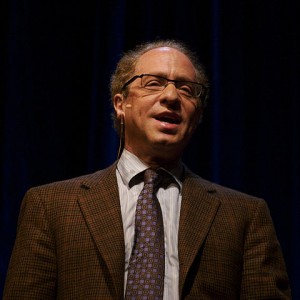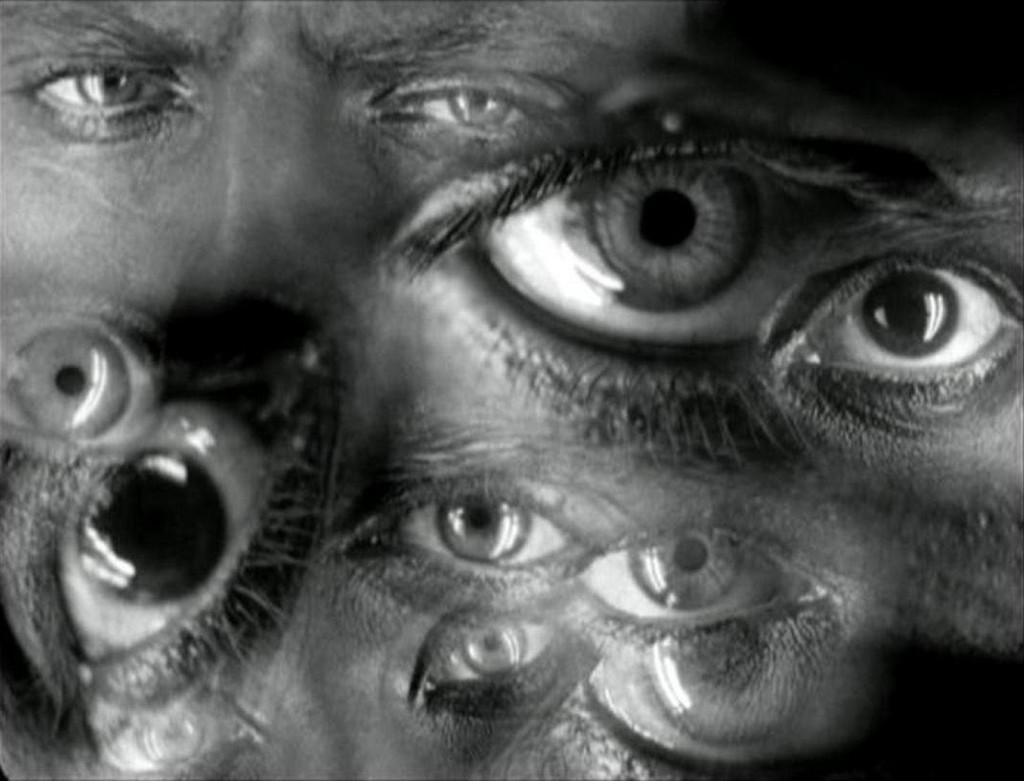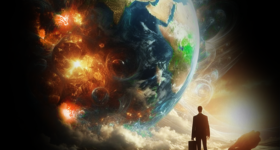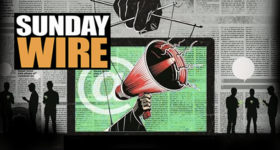 Branko Malić
Branko Malić
21st Century Wire
Posthumanism is a widely discussed subject, but it all usually ends up with rants about dangers of misuse of technology. However, this is not what posthumanism essentially is. We offer an analysis of core ideas underlying posthumanist movement and demonstrate that they are much older than most people think and that one has to be extra careful when saying something along the lines of “I’m Me and I am free!”
Harry and Ray at work and play
The generations to be born towards the end of this decade, or the beginning of the next, should by all means endeavor to preserve their inner child for as long as possible. For the childhood dream of changing reality through a tap of the magic wand, wielded by a playful magus, could soon, in words of Google Lab’s CEO Ray Kurzweil, become “feasible activity in full-immersion virtual reality.” In so saying, Kurzweil actually has in mind a particular magician, the popular sorcerer Harry Potter from J.K. Rowling’s bestsellers.
For those acquainted with Kurzweil’s labors, there is nothing unusual in him relying on a fictional character, whose personal traits seem to closer resemble those of the IT geek, like a young Bill Gates, than a classical wizard from our fairy tales.
Moreover, Ray’s pop-science book Singularity is Near and Rowling’s postmodern occultism perfectly complement each other on the market, not least because they target the same demographic: people on the threshold of adolescence.
If we allow Harry and Ray to enlighten us, we are also obliged to repress the fact that their stories are fiction, not because reality refutes them, but because its logic burdens them with implications which, at least for an adult, shatter the “immersion.”
Magic is an activity of producing effects while sidelining their visible connection to causes. As such it is particularly attractive to children and younger adolescents, not only because it promises the possibility of performing the impossible, but even more so because it implicitly renders obsolete any responsibility for an act.
 Meanwhile, the virtual world prophesied by Ray functions according to astonishingly similar rules: the rift between word and speaker, deed and consequence, widens and deepens inasmuch the virtual avatar is perfected, i.e. removed from reality. The power of creativity grows proportionally to diminishing responsibility.
Meanwhile, the virtual world prophesied by Ray functions according to astonishingly similar rules: the rift between word and speaker, deed and consequence, widens and deepens inasmuch the virtual avatar is perfected, i.e. removed from reality. The power of creativity grows proportionally to diminishing responsibility.
Now, isn’t that cool?
Biological automatons gathered under the aegis of a transhumanist, or in a more final version, posthumanist movement would more or less unequivocally answer in the affirmative. For those unaware, Ray Kurzweil is merely the most media-savvy face among many others: an inventor, entrepreneur and futurologist whose job seems to be marketing the process of braving the political, economic and epistemological peak of the age of Transition. It is an all-encompassing social project whose feasible and intermediate aim is our death.
A Perfect Homicide
We must ask ourselves: if the process of eliminating humanity as such is afoot, why does no one talk about it, except the usual muffled voices of conspiracy theorists and few bioethicists enslaved by academic argot which is in itself already post-human?
We speak here not merely of the concrete posthumanist movement per se, but of the social transition whose results it anticipates. There are infinite ways to kill a man, and not all of them qualify as homicide. There is, for instance, the practice of euthanasia – the exercise of the right to die – slowly entrenching itself in codes of fundamental human rights.
Allow to leap forward – we can affirm that the real reason for transhumanism lies in the very nature of Transition itself. It’s not merely a transitory movement from one state to another, as often branded. On the contrary, when taken as a historical epoch, it is an entirely self-sufficient and enclosed process, the process of infinite ending. If you want to see it – and it’s necessary to see it before proceeding to define it – remember, have you ever paused while walking down the busy avenue and asked yourself a simple question: where does all this busy mess of pedestrians and traffic go? Stop in front of a fitness center with glass panels overlooking the street, and observe all the people running in place on moving tracks; therein lies your answer. For a long time now cities are silent when you interrogate them, so in accordance with the Zeitgeist, the answer is written on the wall. It says: nowhere.
The fundamental cause of Transition is the erosion of every fundament; perpetual movement obliterating the past and infinitely delaying the future, a state, we must add, in which the human being as such will soon be unable to survive. In this sense, a perfect homicide is the one that rules out the possibility of being qualified as homicide. That’s where posthumanism comes into play.
Singularity
The posthumanist movement sees the age of transition as an acceleration of history towards technological explosion, whose culmination is to be expected no later than the year 2050, when, it is predicted, the singularity is to finally commence. The term has many meanings, but posthumanists usually apply two among them. The first, made possible by one of the inciters of digital revolution, John von Neumann, says the singularity is a moment in history when a torrent of technological progress becomes so strong, so quick and so pervasive that human life in turn becomes irrevocably transformed. Contemporary posthumanists join this to a fully developed artificial intelligence immeasurably stronger than that of man and the final assimilation of not only human beings, but the universe in toto, with intelligent machines.
 The second meaning of singularity, brimming with religious pathos for posthumanists, is a hypothetical construction taken from the field of theoretical physics: singularity is a point in which the curve of time/space vectors becomes infinite, thus creating the point of infinite mass and, consequently, infinite gravity field. What happens in singularity remains hidden from the outside observer, because gravity annihilates any movement contrary to it, and so light cannot escape it once in its field.
The second meaning of singularity, brimming with religious pathos for posthumanists, is a hypothetical construction taken from the field of theoretical physics: singularity is a point in which the curve of time/space vectors becomes infinite, thus creating the point of infinite mass and, consequently, infinite gravity field. What happens in singularity remains hidden from the outside observer, because gravity annihilates any movement contrary to it, and so light cannot escape it once in its field.
In that sense, physical singularity can be visualized only by analogies, because the witness passing over its threshold can never return to relate what he has seen. This threshold is termed event horizon. Singularity denies return to anything that enters it, and this means we can talk about it only in mathematical constructions or images, outside observers blind to its shape and form, but certain of its existence in all its magnificence.
Bearing in mind the necessity of light for perception as well as the construction of metaphors, this phenomenon is also known as a black hole.
Gods by Merit
Why compare the acceleration of technological growth with the properties of cosmic monstrosities, frequently the inspiration for creators of science fiction? Namely because there exists a strikingly correct analogy between them, and the posthumanists are all too eager to exploit it.
The idea is that the absolute peak of technological progress is not merely a contingency. It is a moment in the future acting as causa finalis, transforming everything “moving” towards it; it is the endpoint of evolution, and not only of biological life, but of the universe as a totality. Man is the being through and by which the discarding of biology is coming to pass, because he is capable of creating technology and, by dissolving his biological foundation, integrating himself into the world-system. He is able to assume a form perfectly appropriate for dead infinity – that of the machine.
It’s Progress, stupid!
Notably, posthumanists view all existence as an information system. In that respect, the behavior of constitutional elements of matter and energy is intelligent by its very design, in the way a computer with no operator can be defined as intelligent: it is the activity of dead binary reactive material points.
On a biological level, this digital structure elevates itself to genes and their elements, and further, towards an intelligence reduced to the ability to calculate for pattern recognition. In this respect it is astonishing how well the term intelligent design suits both posthumanists and pseudo-christian creationists. Both groups reduce the world to mechanical categories, with the notable difference that the sophistication of posthumanists transcends mere materialism and mechanics, their hope being far better-founded.
It is easier to wait for the rapture we shall create than sell one that was never really in store. Besides, the posthumanist promise to the faithful is formulated clearly and fixated to a foreseeable and definite future. The conquest of death through assimilation of man to technology, AI, and finally to the universe itself, is presented with the winning smile and smooth spin:
“Because you deserve it!”
Man without properties
Eying the Doomsday
To understand the motive of posthumanists and the grounds on which they assert their ambition, we must peer into the metaphysics at the roots of the movement. It is the humanist ideal of absolute freedom of the conscious individuum driven to its final consequences.
The individuum is that which cannot be further divided and whose only limit is the other, equal, individuum. The point of this definition is best reflected in Protagoras‘ homo mensura, i.e. the proposition that man is the measure, not only of history, but all things – those that are, that they are and those that are not, that they are not. It is an attitude developed from the time of Descartes to the Modernity of Hegel through the idea and the possibility of an absolute or at least potentially absolute system of science.
At the peak of Modernity, that is to say between the two world wars, the final dissolution of the subject came to pass. But that doesn’t equal its abandonment as a principle. We still can’t deny that we are human, but in order to plant ourselves at the root of all things – in fact to deify ourselves – we must transcend reality and re-form it, as well as ourselves, according to our own will.
This process can be defined as virtualization, the state in which man lives and behaves as if he is still human, but thinks and works as if he is ceasing to be. It is the advent of Postmodernity, the epoch at whose peak – which means right now – the final decision of man is to be made: Will he remain himself, or will he, after long centuries of the metaphysical beating around the bush, finally cease to be human?
The individuum as metaphysical principle provokes some questions. Namely, how is it possible for something indivisible to be dissolved? In other words, how can the conscious subject, as an unconditional principle, disintegrate? Does that not point into a direction of uncertainty?
The key for a proper answer to this question, as well as for the explication of the inner structure of the term ‘posthumanism’, lies in the method the predecessors of posthumanism relied upon to reach it in the first place. It is the reduction of wealth of experience to one principle, moreover the one everybody likes best: a reflection in the mirror.
Conceiving the individuum as a metaphysical principle finds its genesis in the urge to remove all obstacles to individual freedom. That freedom is completely arbitrary; it presupposes the autonomy of an individual’s reason and will with only one inescapable condition: the individuum is a subject without properties, namely the being whose only identity is contained solely within oneself. This conclusion is inescapable, since it is otherwise impossible to attain absolute freedom. Any other property or qualification – ethnicity, race, religion, family, and finally sex – contaminates absolute identity with a moment of differentiation, thereby destroying it and rendering the individual principle finite and conditioned.
Of course, to be free solely in volition, yet unrelated to the “outside” world, is worthless. Therefore the individual is free to creatively model its world to the point it bangs it’s head on the wall of un-human reality, i.e. when it decides to actualize itself by playing solitaire in a steel mill’s furnace or, less dramatically, limit the freedom of another individual endowed with the same dignity.
Up to this point modern liberalism, which is the social modification of this metaphysical principle, will raise no eyebrows on behalf of enlightened contemporary men. There’s a catch, however. Limited freedom is not absolute, and the concrete human being is not really an individuum. For his identity must in some measure conform to others’ identities, and Narcissus has to allow all the other narcissists absolute right to be the center of the world. Equality is as much necessary as it is unacceptable.
The only way out is for all particular forms of volition and identity to be reduced to a single one, and that means to finally level all forms of differentiation to nothingness. Hence the global struggle for such principles as “minority rights” is inhumane in its essence. Its real purpose is the dissolution of ethnic, cultural, religious, family and sexual differences. Postmodern metastasis of this metaphysics points towards infinity, i.e. aims at the abolition of all human characteristics under the cover of achieving freedom from all human limitations.
So posthumanists promise us that when we ingest millions of nano-bots, we’ll be able to play poker in crematoria, calculate at the speed of supercomputers, change our perception of the world and our bodies at will, because the new paradise will be also pervaded by nano-sensors to enhance its every delight. We will ultimately become as gods: through inconceivable AI we will know everything, and through diffuse nano-bodies we will practically live forever.
Now, isn’t that cool?
Fine Print
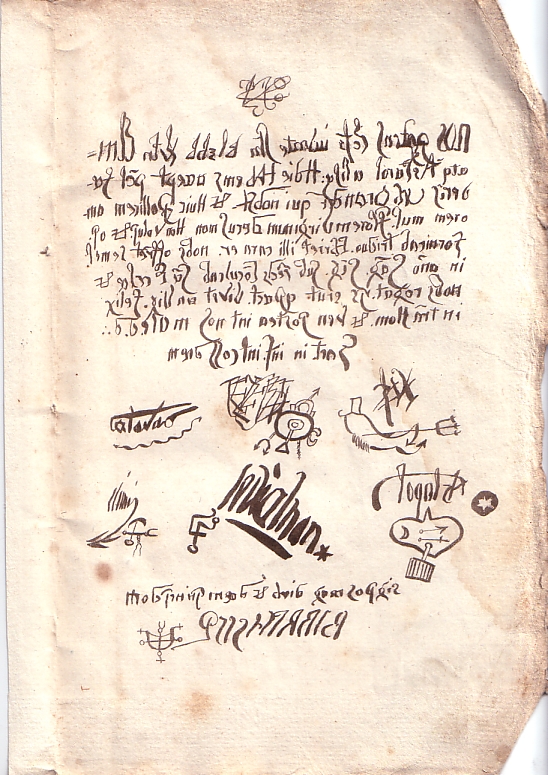
Don’t forget to seek legal council before signing one of these
Perhaps, but in marketing there are always key details to be found in fine print. As in all self-respecting religions, the rebirth of New Man from the bosom of a black hole demands the death of “old” man. It comes to pass through renunciation of all properties which make a concrete individual unique by limiting it, thereby making it a person.
Everything, including the body and thoughts, must be expelled from the identity of the individuum. The death of the human race in the age of Transition is inflicted by stripping away its humanity – the very things by which we are what we are – and re-creating it in absolute freedom. Literally – quod erat demonstratum – a reboot of the Garden of Eden, only this time with a new Author and bountiful, endless fruits from the trees of knowledge and life.
However, the intermediary phases of the procedure are quite painful.
We can compare it to infinite self-injury, the infinite peeling back of one’s own skin only to find a new bloody layer to remove. The ripping and grinding of everything that can be taken apart. And, surely, everything can be taken apart. Because a center without properties does not really exist. It is, taken in itself and deprived of its mirror, pure nothingness.
Let’s entertain ourselves with a few illustrations.
Dividing the individuum is not as absurd as it seems, nor are these abstract thoughts far removed from everyday life. It is necessary because an individual with no properties is in fact an illusion. In order to hold oneself as a universal principle, it must commence its own virtualization, the transformation of itself and the world into a hologram infinitely divided according to its will.
At this moment we can observe to what extent posthumanism is already a dominant worldview today. Popular author David Icke, who would surely never define himself as a posthumanist, talks about absolute freedom of “consciousness having experience” in a holographic universe, drawing upon various substitutes for scientific materialism, ideas which in actual fact share the same origin as the worldview they try to escape.
“I am Me and I am free!” – no origin, no tradition, no institutions, no limitations – only “Me”. That’s what this really means. And it ends in utter, cosmic, ignorance and isolation.
Posthumanism defines its principle clearly and puts the human being at the same level with all matter indiscriminately. In the informational world-system man is not only indistinguishable from animal; he is no different from anything else. In that sense it is all too legitimate to merge body and technology, just as it is legitimate to genetically modify life. Matter is potentially infinitely divisible, just as the individuum is. New Age fantasies of quantum mechanics and its principles as proof of the spiritual foundation of the world are in fact an immersion into sub-materialism of a universe which dissolves, not merely on touch, but on sight, and its corollary: virtual consciousness.
Postmodern pop spirituality and conspirology of the same ilk fit in wonderfully with their “truth vibrations”, “emotional fields,” and “Christ consciousness,” because they impose categories of the lower upon that which is higher, thus losing forever the chance of touching it, submerged unaware in the torrent of Transition.
Further down the slope of everyday life, we have social projects like the “Internet of Things”, implementation of RFID technology and “smart meters”, but also “flexecurity”, “outcome based education” and “life-long learning,” constituting the age of Transition and rendering us networked and addicted to technology in order to properly assimilate coming generations, all with the goal of the machine final triumphant penetration of the body.
Signs of materialization and dissolution mirror themselves in seemingly insignificant phenomena, such as the popularity of tattooing and piercing. Nowadays, covering the body in ink indiscriminately, with no significant message contained in such “art,” is a common phenomenon. It could be written off as the expression of desire for sensations, even painful ones, that emanates from dwellers of a sterilized society. But if we observe it from the posthumanist perspective, it is a clear sign of a gradual discarding of the body’s personal value, its commoditization.
Kurzweil himself notes this trend and remarks how it will make fusion of humans and machines easier because it displays the already-developed habit of treating one’s own body as an external object. Various meditation techniques, courses and self-help literature exhibit the same tendency towards “ego-ization” of the spirit and its treatment as an object to be technically modified and improved, or just as well replaced, dismantled, and even uploaded to the network.
Spaghettification of the Subject
The terms in which posthumanists describe themselves are also very interesting. Ray Kurzweil speaks about his innate design, his obsolete hardware and software – i.e. his body and mind – which he endeavors to keep mended and updated by ingesting more than 150 food supplements daily into his system. The vegan crusader against suffering and transhumanist David Pierce laments over being tired in terms of limits of his design, and envisions the future where technologically modified humans will banish all unpleasant sensations from the world.
We must note, however, that these are not metaphors. These individuals do not consider themselves human any more. The same can be said for nature. Kurzweil’s final prediction is that in the wake of singularity, the A.I. will start “awaking the universe.” Innumerable nano-bots moving faster than light will commence pervading infinity and create a living, intelligent world.
Will they really?
No, they will not. Cosmos, meaning “beautiful order”, the world organism grounded in spirit, in which the man of Antiquity and the Middle Ages had lived is diametrically opposed to Kurzweil’s vision. A universe inseminated by artificial intelligence is a dead thing endowed with operating system, a titanic computer or, more precisely, a living corpse.
The beginning and the end of Transition is death, a black hole in which postmodern man finally encounters himself. We who, thank God, still linger on the sunny side of event horizon can’t really know what the reunion looks like, but we can exercise our imagination with some lively imagery taken from theoretical physics.
Namely, some physicists speak about the phenomenon of spaghettification, of the observer sinking in the black hole. Driving the impression closer to life, it is also known as the noodle effect. Therefore we can easily let the imagination flow and endow us with images of what sinking to the bosom of posthumanism holy mother really looks like. The image of man rendered into macaroni perfectly fits the final logical outcome of the posthumanist principle. Transposition of categories taken from information technologies applied practically to the whole of experience, and, in a historical sense, to all that has been when those categories didn’t exist, speaks clearly of the fact that postmodern man is already being shredded to a semblance of the popular Italian dish.
Implode in Singularity
It’s not about ascent of man, it’s about his fall
Virtual reality is already at work. The ‘real’ reality is unreal, so the apostles of transhumanism contend, believe it or not, from the age of Descartes. Only, as we have already pointed out, humanism never really moved forward from its initial beating around the bush. Consciousness of different metaphysics, different principles and original truths had been tolerated in everyday life and works as a private matter, while in politics and science it stood as an underlying corrective to the conventional wisdom.
Alas, now the zipper has been unzipped, and there is no turning back from real hardcore intercourse with nothingness. Absolute power commenced its own dispersion, its own logically necessary suicide. The idea of abandoning the original for its simulacrum, detaching past from present, now isn’t merely an idea or a general tendency of infinite growth, sustainable or otherwise. It is reverse engineering. It is re-creation of the world by virtue of insane reason and insatiable volition. By virtue of nothing. In this manner posthumanism, aside from being anti-human, is an anti-cosmic metaphysics. And it is, as they say, the future.
Acceleration towards singularity is reality, but not the reality of progress. It is the reality of free fall. According to posthumanist logic, which is the defining idea of our epoch, it is free fall accelerated by the growing inertia of the black hole of metaphysical egotism. We stand before the most destructive idea that will bring forth the most destructive being ever into earthly existence. Not merely a geek wizard, but a geek god, ironclad in isolation from everyday life, armed with the absolute negation of everything which came to pass before him and hell-bent on applying Darwinism hypertrophied into the compulsion to uproot everything different, right down to the subatomic level. And so we can imagine from our sunny side of event horizon:
Narcissus is speeding and accelerating down the vertical of singularity, ripping himself apart, dissolving in space and time … there is nothing but reflections, a world of mirrors closing in from all directions … touching the mirror, he tears away his face to discover what lies behind the surface. But there is nothing.
Can he push Ctrl+Alt+Del, perhaps?
Too late.
His ‘I’ is now everywhere and nowhere, his world is an infinity of ripping apart and perpetual disintegration into his own reflection, an eternity of falling and dissolving in darkness.
And what can we tell him in farewell?
Singularity is near – resistance is futile …
… you poor sucker.
Author Branko Malić is a Croatian author and owner of Kali Tribune, with the background in classical philosophy. He’s focused on philosophy, media, culture and deep politics analysis.
READ MORE SCI-TECH NEWS AT: 21st Century Wire Sci-Tech Files
FOR MORE CONTENT LIKE THIS: VISIT 21WIRE.TV



